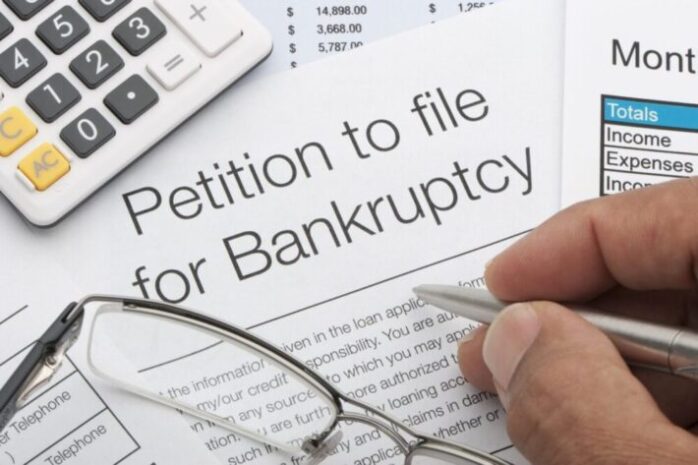
Bankruptcy is one of the most common ways businesses find relief when they run into financial trouble and are unable to pay their debts on time or at all. Filing for bankruptcy is a legal process, in which the federal court may help cushion the debtor against harassment from creditors as they pay back the borrowed money through a more favorable plan. The court may also decide whether the debt should be eliminated altogether. It can also protect debtors (businesses in this case) from other threats such as foreclosure, asset repossession, utility shut off, and evictions, just to name a few. While filing for bankruptcy can have a few disadvantages as well, it could be the only way for a business to resolve financial challenges as they seek to rebuild credit. But how exactly do businesses file bankruptcy? Below is a brief account of what it all entails.
1. Understanding Your Options

Before we get into detail about the bankruptcy filing process, it’s important to understand the various types of bankruptcy. Well, in a nutshell, the three main options include the following:
Chapter 7 bankruptcy
This one is also known as liquidation bankruptcy. Under chapter 7, all dischargeable debts can be eliminated as long as the debtor meets the eligibility criteria and abides by the set rules. It’s common for businesses who intend to close down or liquidate.
Chapter 11 bankruptcy
Also known as business reorganization bankruptcy, chapter 11 bankruptcy is common for large-stake businesses that intend to restructure their debts and remain in business. It allows flexibility but can be a bit costly for the debtor.
Chapter 13 bankruptcy
Basically, a chapter 13 bankruptcy will allow a debtor to protect their assets from creditors who might be seeking levy on them after facing financial difficulties. It allows debtors to restructure their debt repayment plan with their creditors to a more affordable one.
2. Find a Good Attorney

Well, as you can see from just the definition, filing bankruptcy can get really technical. Unless you’re a lawyer by profession, you may not even be able to tell or decide which bankruptcy chapter will best suit your business. Remember, filing bankruptcy is a legal process that involves court proceedings, beating deadlines, and fulfilling certain eligibility criteria. These are all the more reasons to find a good bankruptcy lawyer from the word “go”. As you check this page about the commonly asked questions regarding bankruptcy, you will realize how important it is to have a legal expert in your corner when filing for bankruptcy. A trusted and experienced bankruptcy attorney will guide you through the entire process, keep you informed, and ensure you take the necessary steps with your business’s best interests at heart. Once you do some research and choose a good attorney, the rest of the process should flow smoothly as follows below.
3. Conduct a Bankruptcy Counseling Session

As complex as it sounds, the bankruptcy filing can also be long and confusing. This is why credit counseling is recommended, at least before filing, and after dischargeable debts are forgiven. During the credit counseling session, you are advised about the pros and cons of filing bankruptcy, along with the possible turn of events and the effects of the process in the future. It is important to have someone who will be transparent and honest about the repercussions and outcomes.
An experienced professional may also help explore the various debt relief alternatives if any is available to you and your business. Basically, the pre-filing session will help you decide whether bankruptcy is the best debt relief solution for you while preparing you for what will follow after the process. After this counseling session, debtors are normally issued with a certificate of completion, which will be needed by the federal court when filing for your bankruptcy.
4. Filing for Bankruptcy With the Court

At this point, it is highly likely that your creditors are following you up with calls, messages, letters, and emails reminding you about the debt. Once you actually file for bankruptcy with the court, the court stops all the business and transactions you might be having with your creditors. Since then, your credit report reflects that you are bankrupt. The court also communicates to your creditors that they should stop harassing you or following you up until the case is over. On a lighter note, you literally become a no-go zone to the creditors.
5. Repayment or Liquidation

Needless to reiterate, the best option for you between chapters 7, 11, and 13 will largely depend on your business’s financial situation. If you choose chapter 7, the next step may involve liquidation where the assets are distributed among the creditors equally and the business closes down. Reorganization and debt restructuring are the other possible outcomes.
- Liquidation: This is eligible for all types of businesses. Here, the company is closed and every member is dismissed. The creditor takes over the company and runs it until they recover the money owed.
- Reorganization: The business can continue to operate as it sorts out its debts with protection from the bankruptcy court. This, however, is only applicable to companies that generate regular income.
6. Debt Discharge and Rebuilding Credit

If the debt is weighing you down heavily, the court might consider ruling in favor of debt discharge. However, it doesn’t end there. It’s important to understand that bankruptcy can affect your credit report for as much as 10 years. This means that it can affect your credit scores incredibly, both as an individual and as a business. Nonetheless, your credit score can get back to a good rating depending on how you manage to rebuild yourself after bankruptcy.
For various reasons, we all hit the rock when it comes to financial obligations. Many businesses find themselves unable to pay their creditors and depending on how difficult the tide hits, bankruptcy is often the ideal debt relief solution. Despite the few drawbacks, it presents, filing for bankruptcy can be a great way to rebuild and restore your credibility after financial hurdles in business. Hopefully, the above few pointers shone some light to you regarding filing for bankruptcy.











